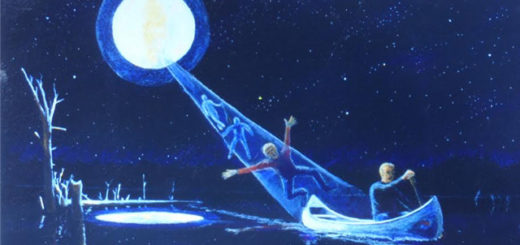Telepathy and Emotion in Alien Society
Part 1: Introduction

Speculating about the inner workings of alien society has always been the special preserve of philosophers, science fiction authors, and scriptwriters.* Their fanciful depictions are usually projections derived from their personal upbringings, their creative powers, and the societies and technological cultures in which they have lived.
These imaginative representations are often fascinating, frightening, and entertaining. For the audiences, their plots’ fictional genesis has never been in question. The discourse between the audience and the inventor has been an agreed upon fiction in which aliens are portrayed according to cultural norms of the times: Aliens are benevolent and have come to help humans; aliens are malevolent and have come to take over and/or destroy human society; aliens have come to share in human society because of their own planetary problems; or, aliens are angry at space probing humans whom they wish to destroy to protect themselves. These and other common science fiction themes have permeated entertainment in the twentieth century from the early pulp sci-fi magazines like Amazing Stories and Galaxy, to the first alien-themed science fiction movies and television shows of the 1950s and continuing to the present day.
Now, for the first time, another way of constructing an alien society has developed –- one which might be fascinating, frightening, and perhaps on some level entertaining, but not necessarily fictional. The new way is by studying people who indicate that they have been abducted into UFOs. Their descriptions of aliens and their interactions on board UFOs1 provide a picture of alien society very different than one based on culturally derived fictional representations.
The authors of these alien accounts are not, for the most part, professional writers, producers, directors, actors, or others in the entertainment and literary industry. The vast majority of them are not prompted to fashion their stories in the hopes of celebrity or remuneration. They are often reluctant public storytellers who would usually prefer not to tell their accounts rather than either to suffer the ridicule that might result for themselves and their families if their identities and stories were to be revealed. Indeed, many say that they have had experiences that they remember but that they have no desire to relate them to anyone.
In spite of this, thousands of individuals have come forward to tell their private stories although one suspects that the vast majority have not done so because they have found no sympathetic and understanding listeners. For the ones who have come forward, their narratives compose an extraordinary body of anecdotal evidence revealing a generally consistent account of alien life that is on the one hand science fiction-like, and on the other hand original and ingenuous. The distinctiveness of these fantastic stories coupled with nonfiction makes them striking in their verisimilitude.
But abduction data and its transmission are extremely controversial. The evidence for its reality is largely anecdotal and often incomplete. And, as is to be expected with emerging and incompletely analyzed data, accounts often present more questions than they answer. Researchers are forced to formulate hypotheses based mainly on information derived from memory often filtered through hypnosis usually administered by amateurs. It is difficult to imagine weaker forms of evidence. Furthermore, abductees will sometimes confabulate and relate events during their abductions that either did not happen, or happened in very different ways than they remember. Thus, using this information to “construct” alien society is an intellectually perilous and perhaps even pointless pursuit.
In spite of these problems, the consistency of detail and of narrative line in these narratives, and the extraordinary circumstances in which the stories are fashioned generate a sense of authenticity that cannot be matched either by idiosyncratic imaginative constructions or by professional fiction authors. With abduction information, generalizations can be made, although partial, that might give us a clearer view into the extraordinary world of alien society.
According to an analysis of abductee testimony, alien society, like any human society is, by necessity, complex. Abductees describe a highly evolved and advanced technological society that gives the appearance of a smooth running, hierarchical, technocratically ordered culture. The beings are obviously very advanced technologically. This requires a mental capacity (either from biological manufacture or from evolution) commensurate with the ability to advance science and thus, in some respects, similar to that of humans. Although their mental ability is on a par or even higher than humans, abductees give no evidence to suggest that their physiological mechanisms and the processes within their anatomical and genetic make-up are the same as humans.
Abductees have indicated that alien gross morphology is human-like but their internal biological systems are very different. Their appearance is also varies significantly from humans. Several dissimilar types of aliens appear to be involved in the abduction phenomenon. The most common ones are the “gray aliens” who appear to do the bulk of the abduction work. They come in two varieties: small and taller. Abductees also report seeing “reptilian-like” beings, “insect-like beings,” and “human-like beings.” Little is known about the reptilian-like beings and I have found their reporting to be less common than the other types. Human-like beings are almost certainly adult hybrids, of which more will be said later. Abductees indicate that the insect-like beings are taller than the other aliens and appear to be at the top of a hierarchical structure of authority – they give orders; all others take orders. Of course, they might not think of this as a hierarchy but rather as a system in which each group performs specialized tasks as expected without the hierarchical structure.2
In spite of their anatomical and/or hierarchical differences, the beings all have certain common and important characteristics: They are all seen together on board the same UFOs, they all do more or less the same procedures, and most importantly, they all appear to be working together for the same goal. Thus, one can surmise that they all come from the same society. But, they have another aspect in common that might help to define the society in which they dwell: They all can communicate telepathically with each other and with abductees.
________________________
1. In this paper I will use the phrase “UFO” to denote an extraterrestrial craft.
2. For the purposes of this paper, all aliens, except hybrids, will be considered as one group.
* A version of this paper was published in The International UFO Reporter, summer, 2001.
READ MORE:
Part 1 Part 2 Part 3 Part 4 Part 5 Part 6 Part 7 Part 8 Part 9 Part 10 Part 11 Part 12 Part 13



 Creators of mankind
Creators of mankind Description of “Tall white aliens”
Description of “Tall white aliens” Where they came from?
Where they came from? About hostile civilizations
About hostile civilizations The war for the Earth
The war for the Earth “Tall white aliens” about eternal life
“Tall white aliens” about eternal life Video: “Nordic aliens”
Video: “Nordic aliens” Aliens
Aliens Alien encounters
Alien encounters The aliens base
The aliens base UFO
UFO Technology UFO
Technology UFO Underground civilization
Underground civilization Ancient alien artifacts
Ancient alien artifacts Military and UFO
Military and UFO Mysteries and hypotheses
Mysteries and hypotheses Scientific facts
Scientific facts


















